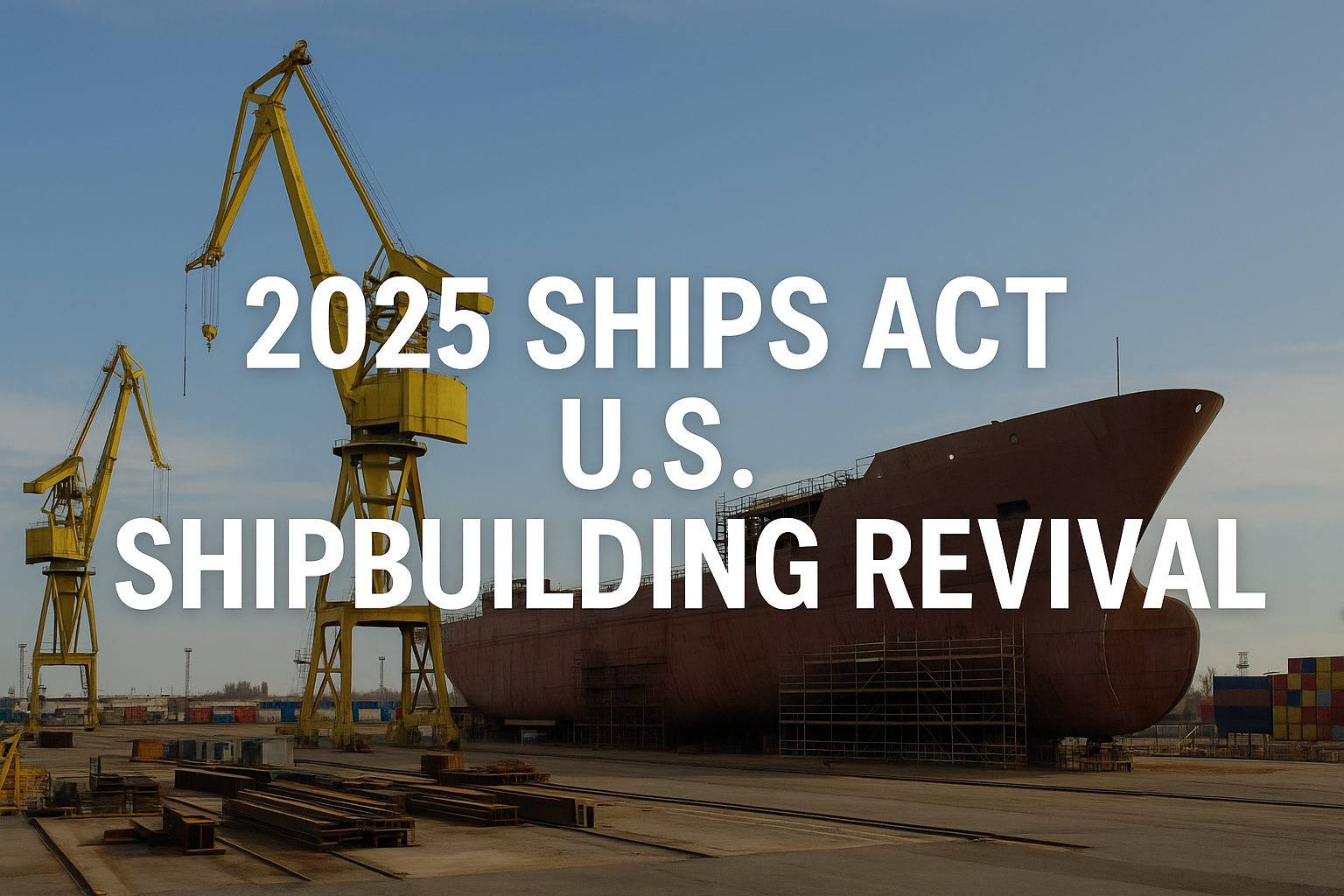On September 23, 2025, major U.S. labor unions publicly called on federal lawmakers to pass the SHIPS Act, a legislative proposal aimed at injecting new funding, incentives, and policy support into domestic shipbuilding. Reuters
Given decades of maritime industrial decline and heavy reliance on foreign-built vessels, the union push underscores both strategic vulnerability and opportunity. In this blog, we analyze why the SHIPS Act shipbuilding funding 2025 conversation matters—to national security, maritime supply chain resilience, and the future of U.S. shipyards.
Why U.S. Shipbuilding Matters Again
Strategic & Defense Imperative
- A robust domestic shipbuilding capability is vital for naval readiness, sealift, and maintaining sovereign design and repair capacity.
- Dependence on foreign yards introduces geopolitical and supply chain risk—whether in times of conflict, sanctions, or trade tension.
Economic & Workforce Revitalization
- Shipyard regions have seen economic erosion; renewed investment can create high-skilled jobs, infrastructure growth, and regional stability.
- The SHIPS Act would act as a stimulus for maritime manufacturing, steel, propulsion systems, and supporting industries.
Supply Chain Resilience
- In times of logistic stress or global disruption, having local repair, retrofit, and new build facilities reduces delays, import dependencies, and risk exposure.
- It enables faster deployment and modification of U.S. flagged merchant and naval fleets.
What the SHIPS Act Proposes & The Union Push
According to the Reuters brief, unions are pressing Congress to act on the SHIPS Act to secure long-term funding for shipbuilding.
While full legislative text is still evolving, expected elements include:
- Capital grants, tax credits, or subsidies for U.S. shipbuilders
- Incentives for modernizing yards, adopting green technologies, and improving productivity
- Preference or requirement for U.S.-built vessels in federal contracts and grants
- Workforce training grants, apprenticeship programs, and retention incentives
The union call is strategic—a way to build political momentum and highlight the urgency of industrial maritime renewal in a global strategic era.
Challenges, Risks & Tensions
While the goals are compelling, implementation is fraught with complexity.
Cost & Budget Constraints
- Shipbuilding is capital-intensive; subsidization risks criticism as taxpayer burden.
- The timeline for returns is long—vessels take years to build; yields are slow.
Market Distortions & Fair Competition
- Domestic support must balance with WTO/trade obligations to avoid retaliation or challenges.
- Efficient foreign yards remain competitive; U.S. yards must match or out-innovate, not just rely on tariff walls.
Technological Demands
- Modern shipbuilding is evolving: green fuels, advanced materials, digital design, autonomous systems. SHIPS Act must incentivize future-proof capabilities.
- Yard modernization is expensive; older facilities may need major overhauls.
Workforce & Skills Gap
- Many maritime manufacturing regions have lost generational skill depth; training pipelines and education backfills are essential.
- Retaining talent and preventing brain drain is a long-term commitment.
Regulatory & Compliance Alignment
- SHIPS Act initiatives must align with maritime safety, environmental, and cybersecurity rules—especially for new builds intended for U.S. or international trade.
- Export controls, classification society compliance, and global design standards are relevant.
Strategic Recommendations for Stakeholders
To ensure the SHIPS Act evolves into a durable and beneficial law, stakeholders should:
- Advocate & Engage — Shipbuilders, maritime associations, and unions must actively engage with congressional committees and defense/maritime agencies.
- Design for the Future — Embrace modular, green, autonomous, and digitally connected ship designs to ensure builds are relevant decades forward.
- Modernize Yards Now — Seek partnerships and private capital to modernize steel yards, fabrication, robotics, and digital tooling preemptively.
- Workforce Strategy — Develop training pipelines: partnerships with maritime academies, community colleges, union apprenticeships.
- Incentive Design — Push for performance-based incentives tied to emissions reductions, cybersecurity compliance, and sustainability, not just build volume.
- Cross-sector Synergies — Link SHIPS Act benefits with defense, offshore energy, coastal infrastructure, and maritime logistics to broaden political support.
Conclusion
The union-backed push for the SHIPS Act shipbuilding funding 2025 on September 23 signals a turning point in U.S. maritime strategy. After decades of industrial erosion, the U.S. now faces a strategic crossroads: either re-invest in sovereign maritime capabilities or accept vulnerabilities in fleet dependence.
If passed well, SHIPS could galvanize a new era of maritime strength, resilience, and competitive design. But success depends on careful policy design, stakeholder alignment, and a forward-looking technological vision.
Ready to build the future?
Talk to The Saturn Partners about shipyard modernization planning, maritime industrial strategy, and integration of cybersecurity and green tech into new builds. Let’s ensure your shipyards—and national maritime strategy—are built to last.

